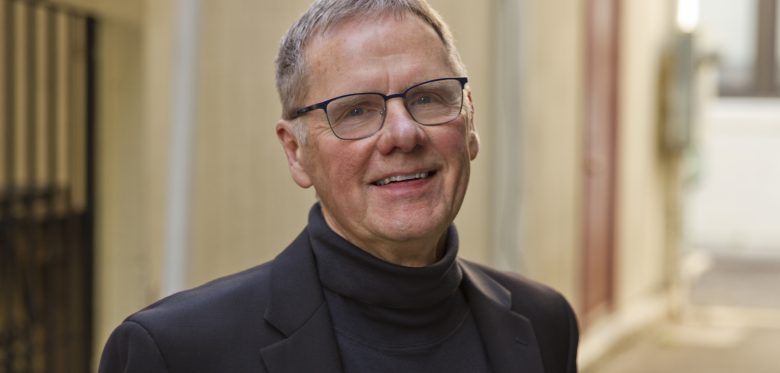Vital skills: The New Leadership Literacies
We think we are connected today, but the next ten years will be a period of explosive connectivity and asymmetric upheaval. In this future world of dramatically amplified digital connectivity, a path that is characterized by increasing speed, frequency, scope and scale of disruption will emerge where anything that can be distributed will be distributed. The shift from centralized to distributed organizations has already begun, but most leaders—and most organizations—aren’t ready for this future.
Younger leaders will be better prepared for this future than older leaders. Many young people are in a blended-reality world already with constant mobile online filters for the physical world. They are online, unless they are off. For most adult leaders, we are offline—unless we are on.
Twisting Toward Distributed Everything
Distributed organizations have no center, grow from the edges, and cannot be controlled. Hierarchies come and go in shape-shifting forms resembling a swirl. Rock-star leaders will be rare and networked leadership with strength and humility will work best. As centralized and decentralized organizations become increasingly distributed, expect a cloudburst of disruption.
The disruptions of the next decade will be beyond what many people can cope with thus we will be susceptible to simplistic solutions. Certainty about the future may provide temporary hope, but it is likely to be false hope since we live in an increasingly VUCA (Volatile, Uncertain, Complex and Ambiguous) world.
In The New Leadership Literacies I’m focused on the leadership literacies that will be necessary to thrive in this kind of world. In this future, leaders will see things they have never seen before and the ones who have the ability to fail gracefully at the edge of their competence will be rewarded.
The rest of this blog post outlines short summaries of the five leadership literacies that are needed to thrive in a future of extreme disruption and distributed everything.
The New Literacy of Looking Backward from the Future
Looking backward from the future will increase your ability to do the kind of dilemma flipping that will become increasingly necessary in the VUCA world and help you find your clarity.
LEADERS WHO HAVE THE LITERACY OF LOOKING BACKWARD from the future will say:
- I can see long-term patterns of change ten years ahead, beyond the noise of the present.
- I bring a futures perspective to every conversation.
- I believe that a futures perspective makes better decisions in the present more likely.
- I develop my clarity but moderate my certainty.
The reason you look long is to develop the perspective necessary to come up with a good plan of action, a way forward, expressed with clarity and ideally as a story. The big lesson is to be very clear where you’re going, but very flexible how you get there. Action should animate you. That’s the basic discipline of looking backward from the future—but still acting now.
The New Literacy of Voluntary Fear Engagement
The new leadership literacy of voluntary fear will require the ability to immerse yourself in unfamiliar environments, to learn from them in a first-person way as well as allow leaders and workers to gamefully engage in and create low-risk spaces where they can practice rapid prototyping for innovation.
LEADERS WHO HAVE THE LITERACY OF VOLUNTARY FEAR will say:
- I am comfortable with and adept at gaming, simulation, improvisation, and role-playing.
- I am committed to immersive learning to engage with communities where I lead.
- I practice my leadership skills in low-risk settings.
The whole point of gameful engagement is to immerse yourself in a realistic but mock fearful environment and learn how to thrive, or at least push through it. Gameful engagement can be great learning, if you’re playing the right games. Gaming something means trying it out in a low-risk environment before doing it for real. You have to do that in a spirit that allows you to fail early, fail often, and fail cheaply.
The New Literacy of Leadership for Shape-shifting Organizations
Over the next decade, any organization that can become distributed will become distributed. Distributed organizations will be used for both good and evil. In fact, the criminal economy and terrorist groups are disturbingly effective at using distributed organizations already.
LEADERS WHO ARE FLUENT IN THE NEW LITERACY OF shape-shifting organizations will say:
- I am very good at leading through entangled networks that have no center, grow from the edges, cannot be controlled—and where hierarchies come and go.
- I always look for ways to create mutual-benefit partnering models for engagement.
- I seek out diverse potential partners who can help me do what I cannot do alone.
The big challenge with shape-shifting organizations is that leadership will look really different. Leading shape-shifting organizations will amplify the need for constructive depolarization: The ability to calm tense situations where differences dominate and communication has broken down, and to bring people from divergent cultures toward constructive engagement. It will also require commons creating, which allows assets to be shared and provides mutual-benefit partnering models for innovation.
The New Literacy of Being There When You Are Not There
The literacy of beyond being there will require leaders to apply the maker instinct to themselves. The maker instinct will be needed to re-make yourself and develop your own blended-reality flair. It will also require leaders to become smart-mob organizers. Smart-mob organizing allows you to pull together people to help do what you need to do—using a wide range of media appropriate to the task at hand.
LEADERS WHO ARE FLUENT IN THE LITERACY OF BEING there when you are not there will say:
- I am skilled in the use of multiple media as I communicate my leadership, including not only in-person meetings but also a wide range of electronic media.
- I am skillful in choosing which medium is good for what, with whom.
- I am able to communicate my leadership presence continuously, even when I am not physically present.
Most leaders I know today are at their best when they are there physically, in person as we say. When they are not present physically, however, there is often a big gap.
In a world of disruptions, leaders will need to have a presence at all times, anyplace, anytime. Sometimes, they will need to feel present everyplace, every time—without feeling intrusive. Leaders will need to make very smart decisions about when to travel and when to use which virtual medium in what way with whom.
The New Leadership Literacy of Creating and Sustaining Positive Energy
The literacy of creating and sustaining positive energy will require nurturing bio-empathy with yourself and be open and transparent about what matters to you, without advertising yourself
LEADERS WHO ARE FLUENT IN THE NEW LITERACY OF creating and sustaining positive energy will say:
- When I walk into a room, I radiate positive energy.
- I have a disciplined approach to my own physical, mental, and spiritual (not necessarily religious) fitness in the face of my daily work pressures, my private life, and the external world.
- I balance my personal energy throughout my working day (I moderate my peaks and droops), and I am resilient under pressure.
- I create space for the people I lead to balance their own physical, mental, and spiritual energy.
If leaders are going to thrive in a future of extreme disruption, they must not only manage their own energy, they must encourage, model, and reward positive energy in others. The tools for energy management are so much better now than they ever were—and they will get ever better over the next decade. Leaders have no excuse now. Fitness will be a price of entry for top leadership roles. Extreme fitness—physical, mental, and even spiritual (though not necessarily religious)—will be required for most leadership roles.
For more information on new leadership literacy visit: newleadershipliteracies.com
This blog post is a revised excerpt from Bob Johansen’s new book The New Leadership Literacies, Oakland: Berrett-Koehler, 2017



Kommentare
[…] gemeinsam mit allen Beteiligten zu gestalten? Dabei spielen die Herausforderungen der so genannten VUCA-Welt (volatility, uncertainty, complexity and ambiguity (dt.: Volatilität, Unsicherheit, […]
[…] zeichnet Ihrer Ansicht nach eine gute Organisationskultur aus, um als Unternehmen in der VUCA-Welt bestehen zu […]
[…] an acronym to capture the nature of an increasingly unpredictable and dynamic world. They called it VUCA—an environment of nonstop volatility, uncertainty, complexity and […]